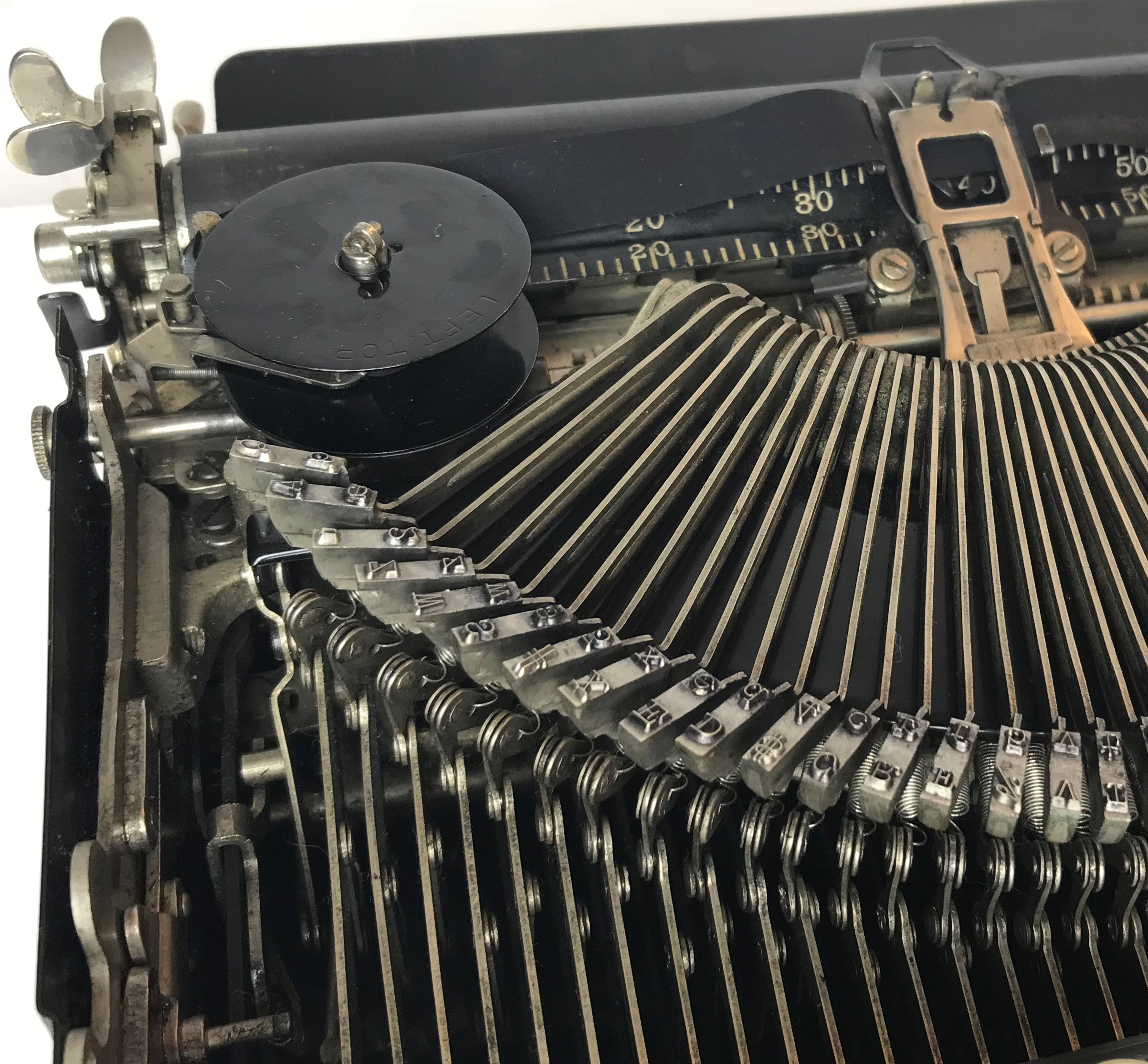1900 Blickensderfer #7

See more photos of the 1900 Blickensderfer #7.
Connecticut Typewriter With a German Name
The fascinating Blickensderfer was invented by George Canfield Blickensderfer. Particularly notable was the fact that the Blickensderfer was a “visible” machine enabling the typist to see what was being typed at a time when other early typewriters generally typed on the underside of the platen.
The first versions of the Blickensderfer were unveiled at the 1893 world's Columbian exposition in Chicago. Those were the model 1 and the model 5. Compared to other typewriters at the time, the Blickensderfer was much simpler and less expensive—and it was very portable.
Even before the Model 7 was introduced, Blickensderfer became became one of the worlds largest typewriter manufacturers largely because of its simplicity and reliability. According to Wikipedia, a typical Blickensderfer machine contained only 250 parts compared to the 2,500 parts of a standard typewriter.
The machine also used a “scientific” keyboard, notable by its bottom row of keys that spell DHIATENSOR. After an analysis of the letters most commonly used in the English language, Blickensderfer determined that 70% of the most commonly used letters and 85% of the words contained the letters DHIATENSOR.
Wikipedia notes that, “The machine used a simple drum typewheel containing three rows of characters: lower case, upper case and a row of numbers and symbols. Depressing a key caused the typewheel to turn so the correct letter was positioned over the paper. As the wheel turned it moved downward, contacting an ink roller prior to striking the paper. This allowed for greater speed in typing as there were no keys to become jammed or stuck together.”
The ingenious felt ink roller was far simpler than using inked, rotating, typewriter ribbons that required typists to reverse the ribbon direction regularly. While the roller was simpler, it did require the typist to frequently add ink to the roller so the typed letters would always print.
The type drum was interchangeable, offering a variety of languages and fonts. The interchangeable typewheel of the Blick preceded the IBM Selectric design introduced by almost 70 years later in 1961.
You will note in the accompanying photos the simple, but effective, carriage lock on the baseboard consisting of two angle brackets that swivel to constrain both sides of the carriage.
The machine is complete with a contoured wooden case.
_______________
The Blickensderfer #7 uses a 3-row, non-Qwerty, 30-key, downstroke mechanism.
Overall condition: Good
Year: 1900
Serial No.: 54959
Type language: English
Manufactured in Stamford, Connecticut , USA


